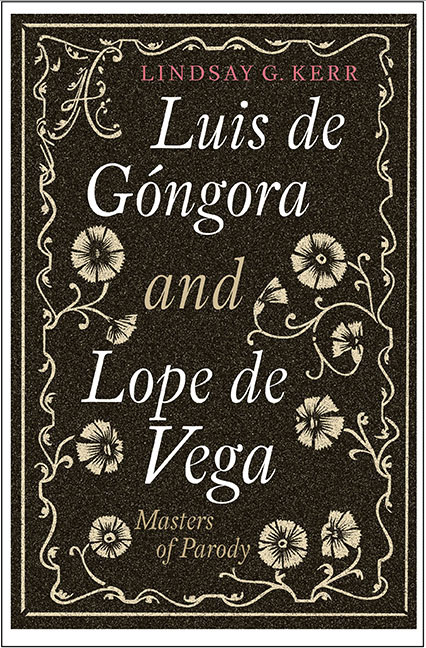Summary
Hay que tener cuidado al elegir a los enemigos porque uno termina pareciéndose a ellos.
Jorge Luis BorgesThe parodic poetry written by Luis de Góngora and Lope de Vega at the end of their professional careers and in the winter of their years unquestionably brings forth something new, built from the bricks of ancient and contemporary poetic monuments. These poets utilise parody as a process that, paradoxically, ends and begins simultaneously in order to engage with the literary past, question its legacy, and redirect future poetics. Góngora's mytho-parodic trajectory and comic culmination, and Lope's final theatrical extravaganza as Tomé de Burguillos, reveal a wealth of common practices. Primarily, against the traditional critical tendency to pit our authors against one another, this comparative study has evaluated the methodologies followed by Góngora and Lope, noting correspondences and assessing whether and how these are paradigmatic of a late style. With this in mind, I will discuss the metapoetics of the performed self, particularly in relation to the apparent presence or absence of a recognisable self in the poetry. One of the most pronounced differences between the poetry of Góngora and Lope is the perceived impersonality or fragmentation of the poetic voice in the work of Góngora, and in Lope, a body of work constructed from the pure, visceral, lived experience of its author. In my view, these competing methods of composition are in fact a false dichotomy. Isabel Torres points out that ‘the generic and rhetorical construction of lyric subjectivity in Góngora's poetry is now generally recognised, but without discounting a connection with history’. In Lope's case, the critical pursuit of biographical material in his poetry is perhaps proof positive of an ostensibly graspable, tangible self, one that is problematised by the ambiguity of Tomé de Burguillos. My interrogation, however, does not merely constitute an argument for the presence of Góngora, or for the absence of Lope, but that both poets work to conjure up a self or selves from a multitude of sources. Their late parodic works are created essentially as living monuments to poetry, buttressed by the self, in which disparate modes of being vie for supremacy, rendering it impossible to identify one single voice. Arguments for Góngora's emotional absence are undermined by assumptions of aesthetic coldness, for the poetic monument is designed to convert aesthetic energy into emotion in the reader.
- Type
- Chapter
- Information
- Luis de Góngora and Lope de VegaMasters of Parody, pp. 167 - 192Publisher: Boydell & BrewerPrint publication year: 2017

